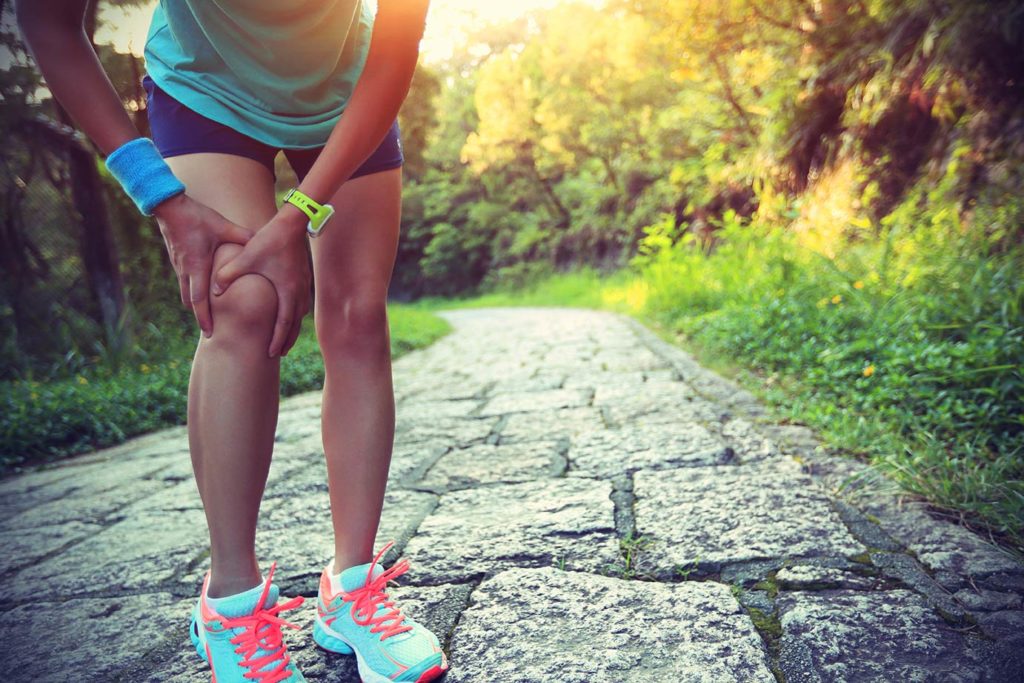Only have five minutes to learn about your knee cap pain?
Below is a summary of all of the information contained within the ‘understand your pain’ pages. This information does not replace consultation with a physiotherapist or doctor.
Signs and symptoms:
- Pain around, or behind the patella (knee cap).
- Knee cap pain with knee crepitus (knee crepitus does not indicate that your condition is worse).
- Tenderness on patellar palpation.
- Pain during sitting, or pain when straightening your knee after sitting.
- Mild swelling.
Aggravating factors:
- Squatting (80% of people with knee cap pain will experience pain during this movement).
- Running.
- Stair ambulation (going up and down stairs).
Associated factors:
- Physical factors- anxiety, depression, fear of movement.
- Altered movement patterns- running, climbing stairs.
- Unaccustomed loading- doing ‘too much too soon’.
- A combination of the above.
Pain monitoring:
 It is common to experience some knee cap pain at the start of treatment.
It is common to experience some knee cap pain at the start of treatment.- Limit pain to less than 2/10 during activities.
- Avoid exceeding 5/10 pain during exercise.
- Monitor pain levels post-exercise (pain levels should return to normal 60 minutes after and should not be increased the following morning post-exercise).
Who is impacted?
- Impacts 11-17% of the general population (adults).
- Impacts 16.5% of runners.
- 2nd most common knee complaint in adolescents
- Women are twice as likely to experience knee cap pain, compared to men.
Expected duration:
- Variable between each person.
- 6/10 people reported favourable outcomes after 1 year.
- 4/10 people reported unfavourable outcomes after 1 year.
- It may be harder to achieve complete recovery if you have had knee cap pain for a longer period of time.
Supporting articles
Boling 2010. Gender differences in the incidence and prevalence of patellofemoral pain syndrome.
Collins 2013. Prognostic factors for patellofemoral pain: a multicentre observational analysis.
Dye 2005. The pathophysiology of patellofemoral pain: a tissue homeostasis perspective.
Maclachlan 2017. The psychological features of patellofemoral pain: a systematic review.
Smith 2018. Incidence and prevalence of patellofemoral pain: A systematic review and meta-analysis.
Taunton 2002. A retrospective case-control analysis of 2002 running injuries.
Published November 2023
